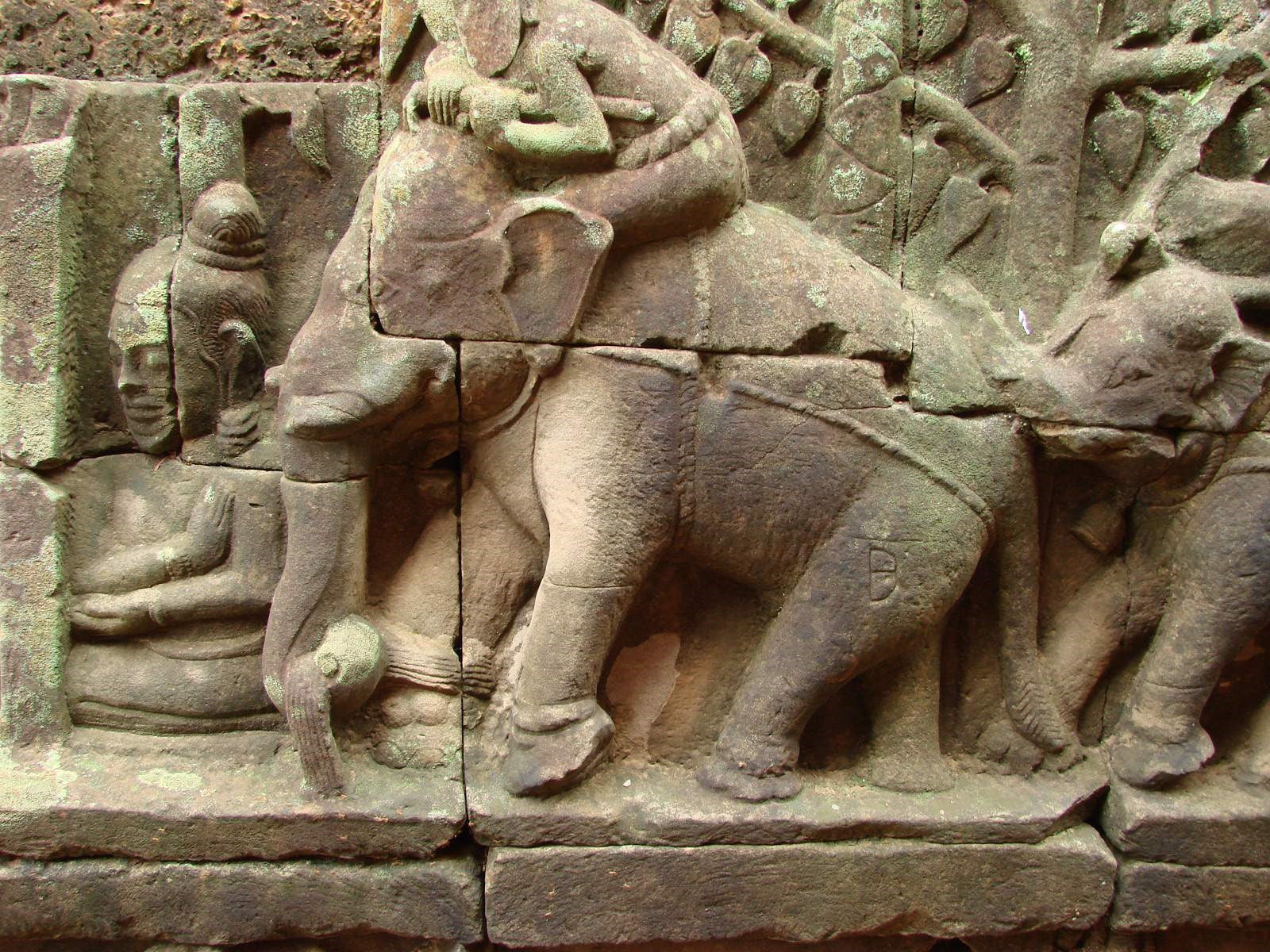| Anyone who has been to Moo Baan Chang, Ban Ta Klang, Thailand, would not be surprised that nearby Cambodia has had a significant impact on the elephant culture of Thailand. The mahouts speak a mixture of Khmer, Thai and an unknown local dialect. Moreover, the importance of elephants in ancient Cambodia can readily be seen on the reliefs in the remaining ruins of Cambodian temples. On March 19, 1970, I had arranged a stopover in Siem Reap, home to the Angkor Archaeological complex containing Angkor Wat, Angkor Thom and the other capitals of the Khmer empire dating from the 9th century. I remember the specific date, as it was the day after Prince Sihanouk was overthrown in the CIA supported coup by Lon Nol. I called Air France for confirmation they could land in Siem Reap that morning as the flight stopped in route to Hong Kong. They had no idea as to whether the airport was open but the Air France agent said, “Take a chance, we will circle the airport, if it looks okay, we will land or otherwise go on to Hong Kong. There you go “Air Chance!” We landed and several people disembarked to enter a surreal setting as no other visitors were there. I had all of the temples to myself and came across a great elephant bas-relief.  On April 17, 1975, the Khmer Rouge rebels moved into Phnom Penh to seize control of Cambodia. If any foreigners were nearby when this photograph was taken, they are not with us today.  The day before, our friend Rocky of Air America, flew a friend of mine into the Phnom Penh airfield to conclude a piece of business for ESSO and that day another Air America pilot wearing the traditional Hawaiian shirt picked up Khun Suphapong, a Thai friend of mine, and his family. At that point in time, the Khmer Rouge fired rockets at the airstrip, a piece of cake for most any Air America pilot. From April 17, 1975 until late 1978, the Khmer Rouge committed genocide on an unprecedented proportion of their population. The elephants did not fare that well either. The fortunate ones joined their cousins to the west in Surin and Buriram, Thailand. Those who had to stay behind probably suffered more in the later years from the vast numbers of land mines that were put in place by the Khmer Rouge. The reign of terror ended when the Vietnamese invaded Cambodia and liberated the major population centers including Angkor Wat while the Khmer Rouge fled into the foliage to remain for some twenty years.  On October 25, 1996, my wife Joey, Khun Suphapong, his wife, Aiping and I chose to visit Siem Reap. It was somewhat unnerving as there were truckloads of Khmer Rouge with their red scarves, AK-47’s and RPG’s riding in the open backs of the trucks. On the other hand, there were almost as many news media so we concluded it was surrender time for some of them. Once again, we had the temples pretty much to ourselves but the hotels that survived the war years were awful. Landmines remain in remote areas to this day and occasionally elephants are fitted with prosthetic legs in Thailand such as this one for an elephant who stepped on a mine near the Thai/Cambodian border.  Apart from peace and tranquility, the most dramatic change has been the vast improvement in the quality of life in Cambodia as well as the creation of luxury resorts to offer visitors the opportunity to experience the fantastic ancient temples of Angkor Wat and serene tropical paradise islands offshore. 
|

